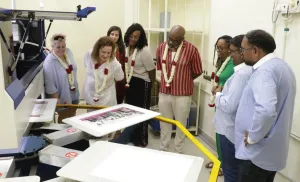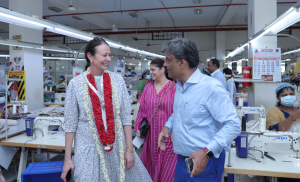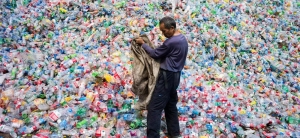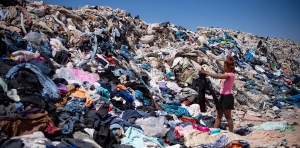Fashion’s Dirty Secrets
Image Credits: BBC
Earlier this week the BBC aired another environmentally-related documentary – this time dealing with the fraught topic of fashion and its impacts on the planet. Stacey Dooley, who takes a lead role within the programme goes to Kazakhstan, Indonesia and Copenhagen to try and uncover ‘Fashion’s Dirty Secrets’.
First, we are taken to the Aral Sea (or what remains of it) in Kazakhstan. The vast body of water that existed in 1960 covered 68,000 square kilometres. Now it is merely 3,300 square kilometres. The principal reason for this drastic loss? The cotton industry. Neighbouring Uzbekistan, of which the Aral also straddled, has vast cotton plantations and is responsible for diverting huge volumes of water to sustain cotton production. The impact of this has been not only horrendous for the local environment – temperatures have soared in the absence of the water, but also to human related activities have taken an enormous toll. The fishing industry in the region has fallen to its knees leaving people stranded and without employment.
At the Copenhagen Fashion Summit, where we are next whisked off to, Dooley attempts to approach leading brands to ascertain whether they are looking to do anything about this huge but silent ecological disaster. Representatives from ASOS and Primark scurry away from Dooley as she looks to press them further – ‘they must have big brand images to protect’ she complains as it seems like no one will talk to her. That is until we meet a representative from Levi’s steps in and offers warm words of encouragement about what his company is trying to do. He claims that Levi’s are looking into using denim sourced from landfill to construct recycled jeans. Considering jeans are hugely thirsty items of clothing, it seems apt and important that one of the leading brands is looking to do something about the problem.
The penultimate stage of our journey is in Indonesia and the Citarumriver. Renowned as one of the most, if not the most, polluted rivers in the world, we are provided with the final piece of damning footage. Floating down the river, Dooley passes factory after factory allowing their waste just to freely flow into a river which provides water for so many local residents. One particularly horrific clip shows two young boys jumping in and out of a river that is black and frothing as a result of waste from a textile factory.
Finally, back in the UK, Dooley meets with fashion bloggers who upload videos wearing the latest trends. These young women rely upon the relentless new material provided by big brands to create their content so, naturally, they are shocked when shown the clips from the aforementioned countries. It would be easy to blame them for promoting fast-fashion, however, this issue if far too complex to simply point an accusing finger at Youtubers.
We are left at the end of the programme grappling for solutions. Do we stop buying clothes, full-stop? Do we only buy from ethically and environmentally conscious companies? Or do we just carry on and admit defeat in the face of this behemoth of an industry. Certainly it is not easy to answer these questions, and we are going to need plenty of ingenuity to get us out of this mess.




